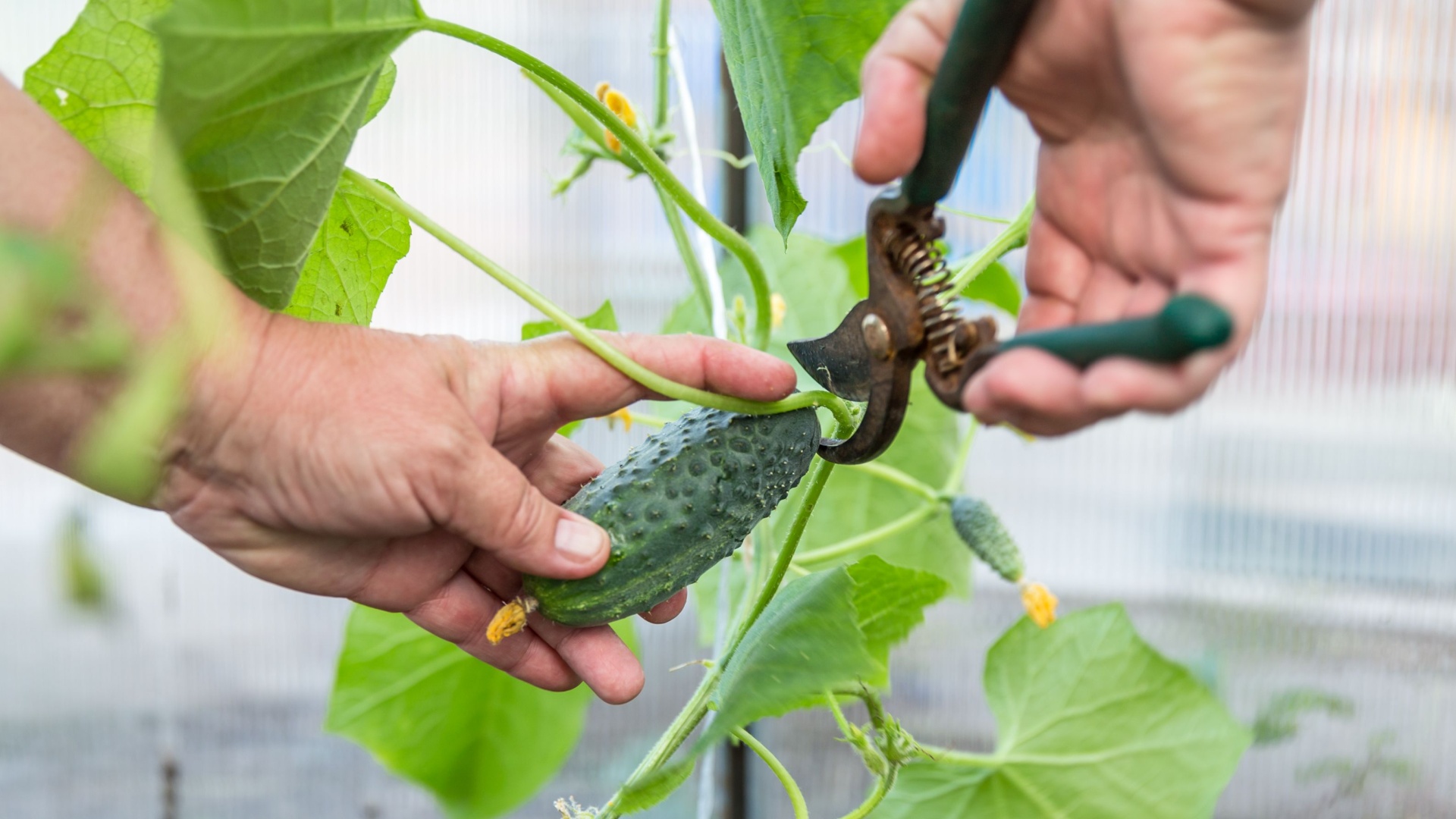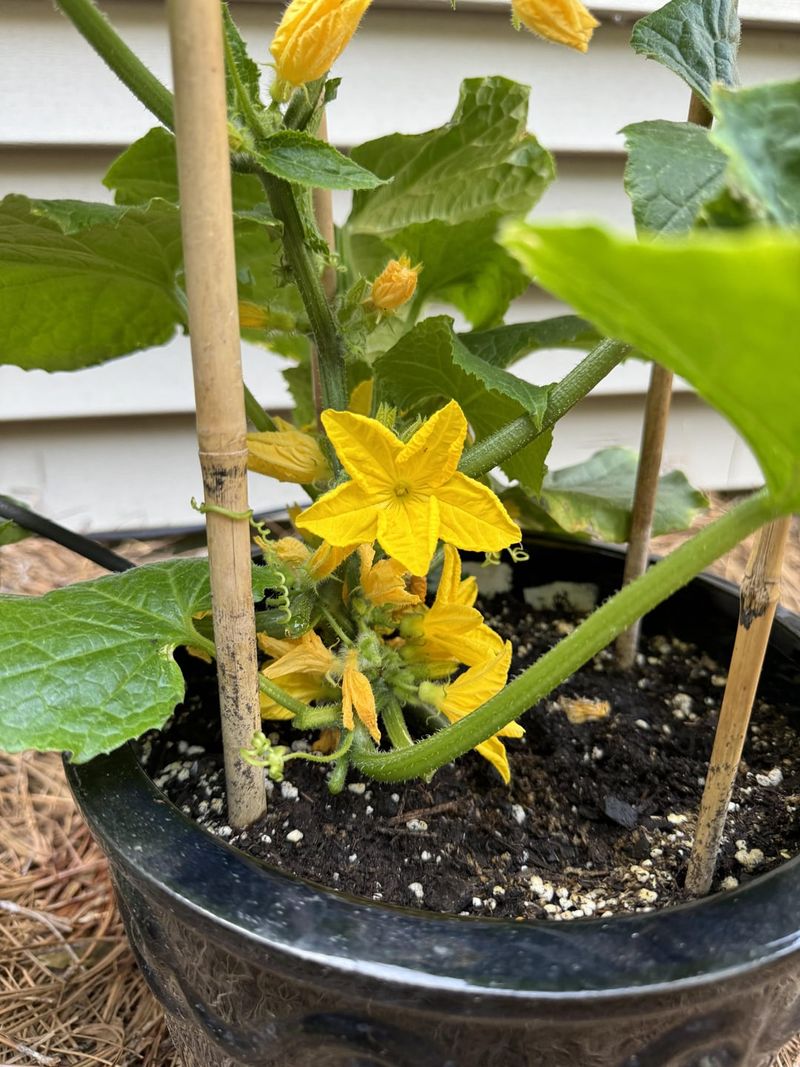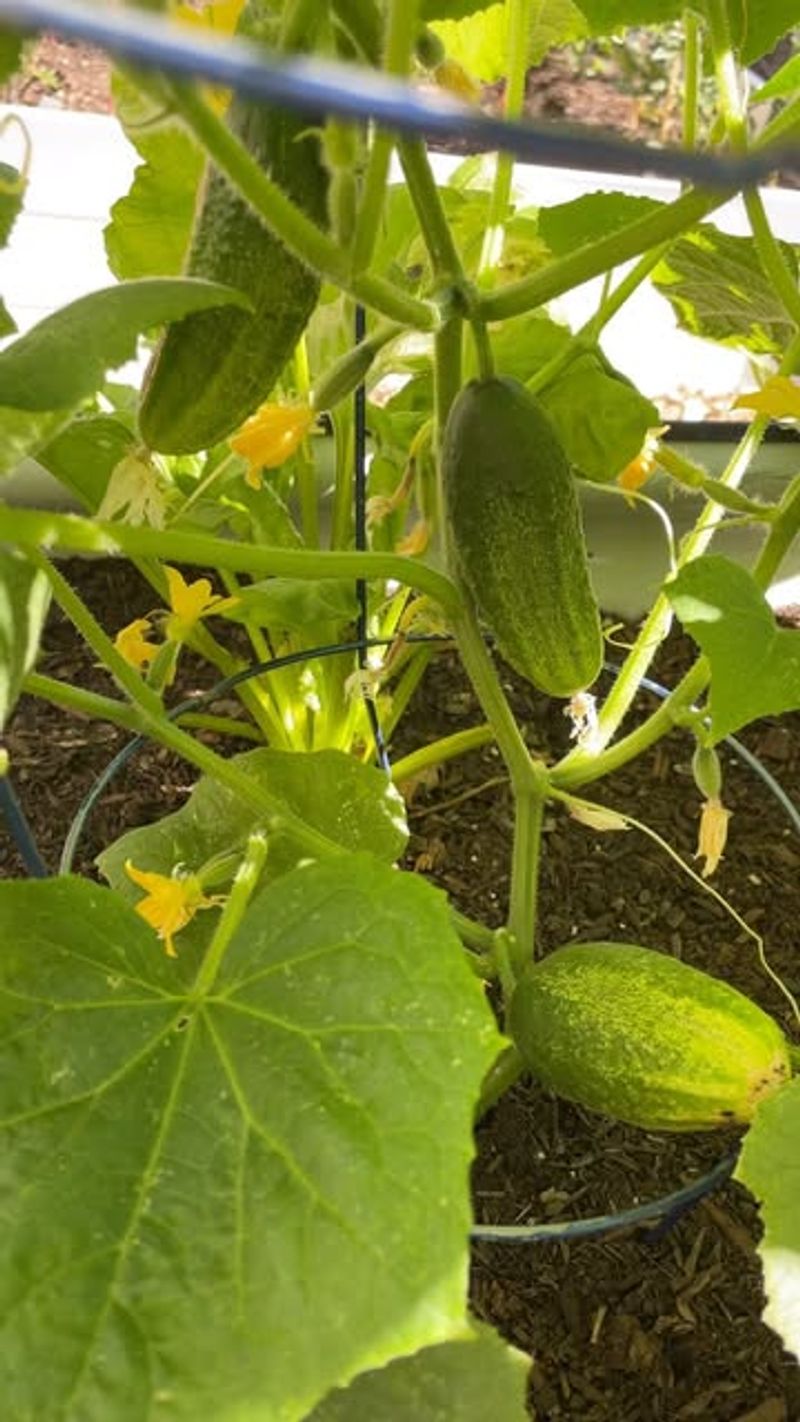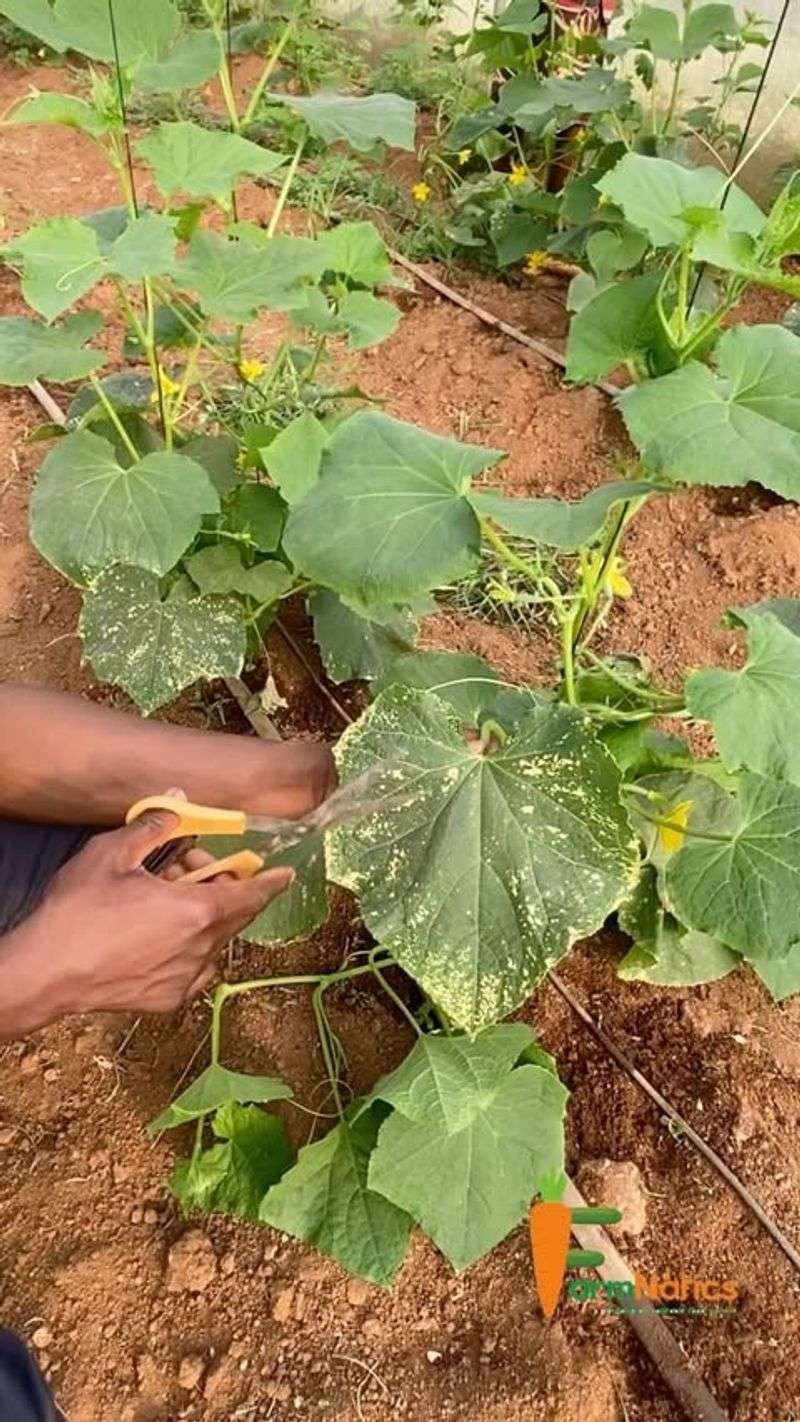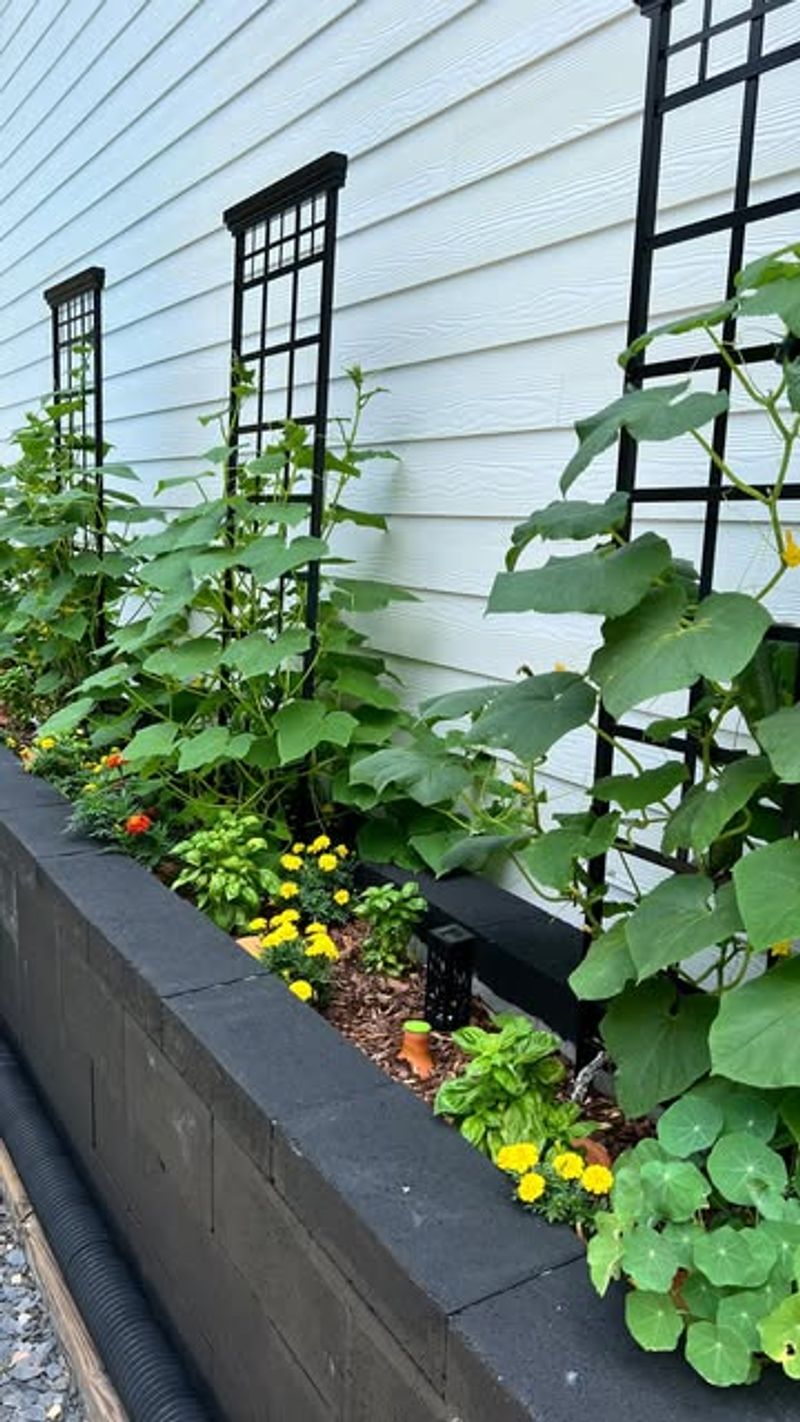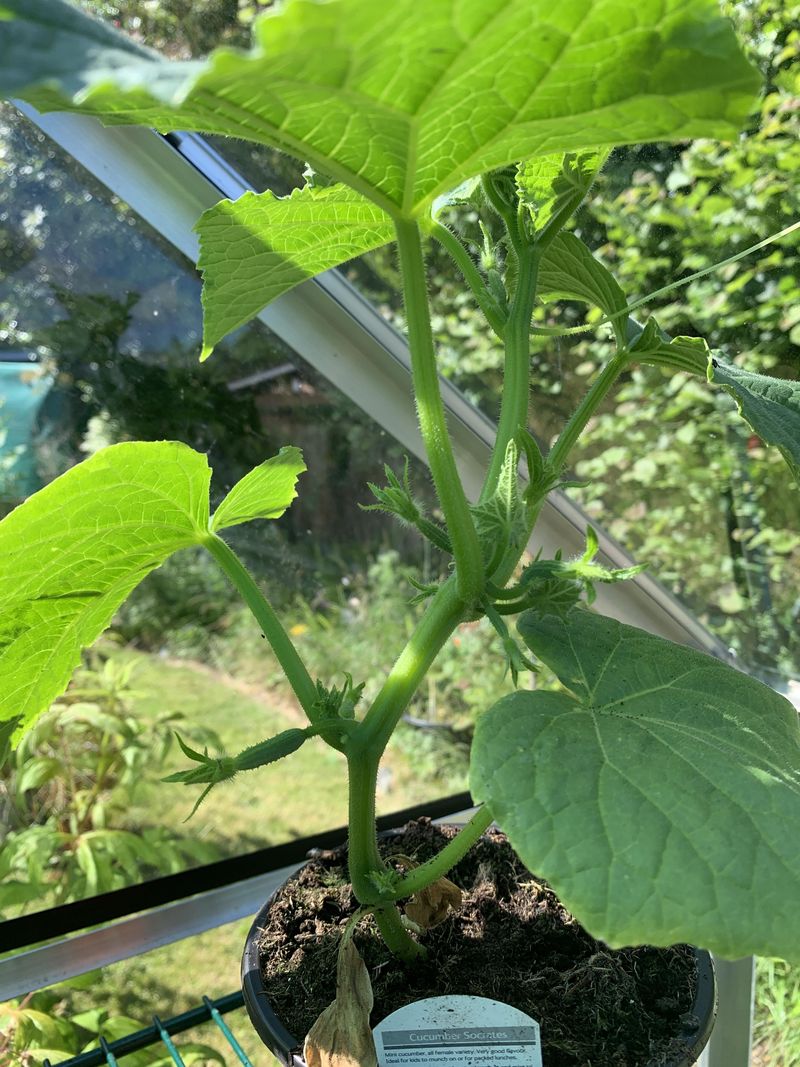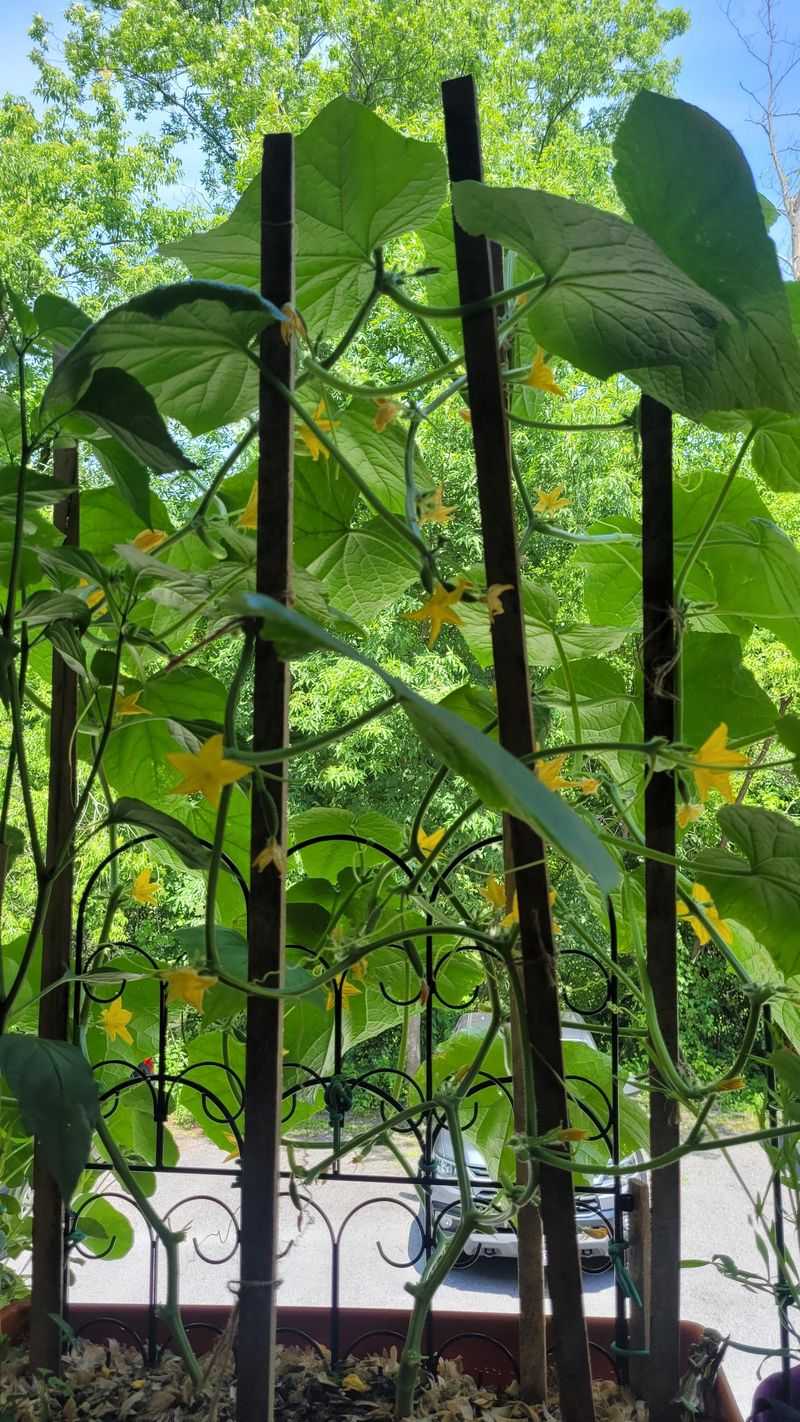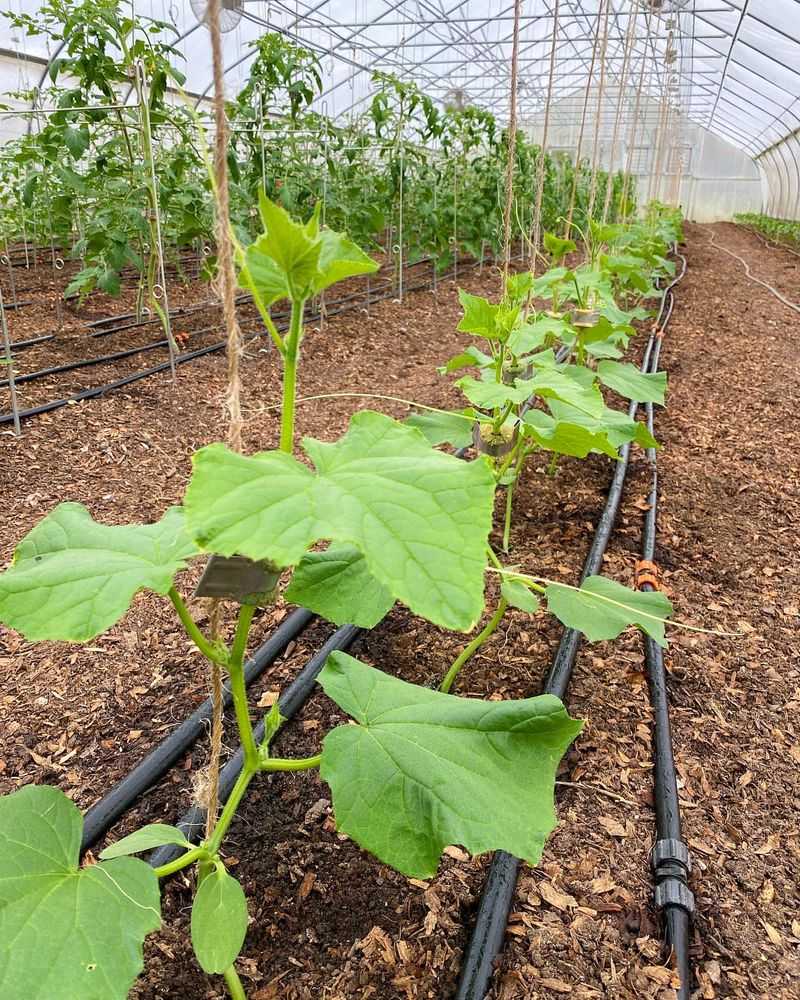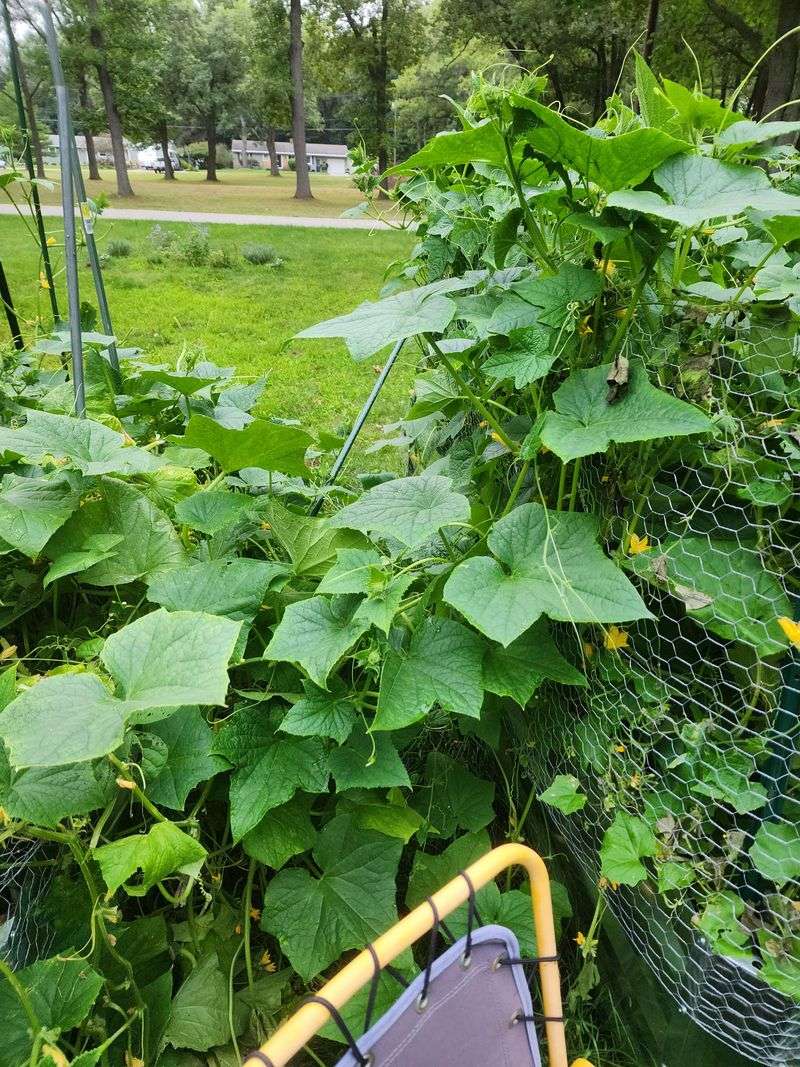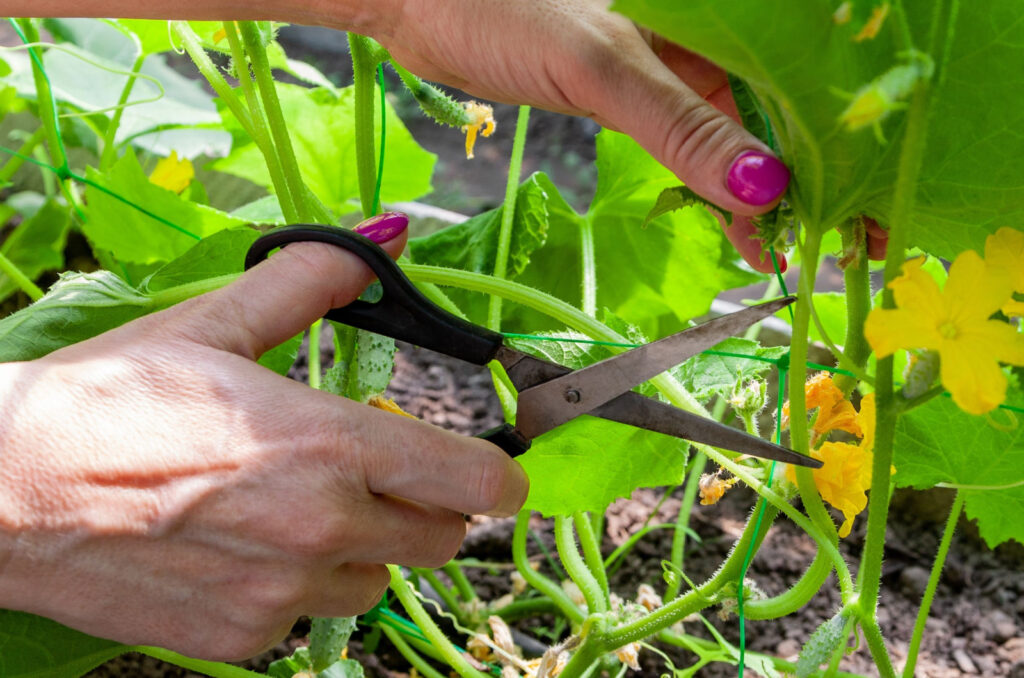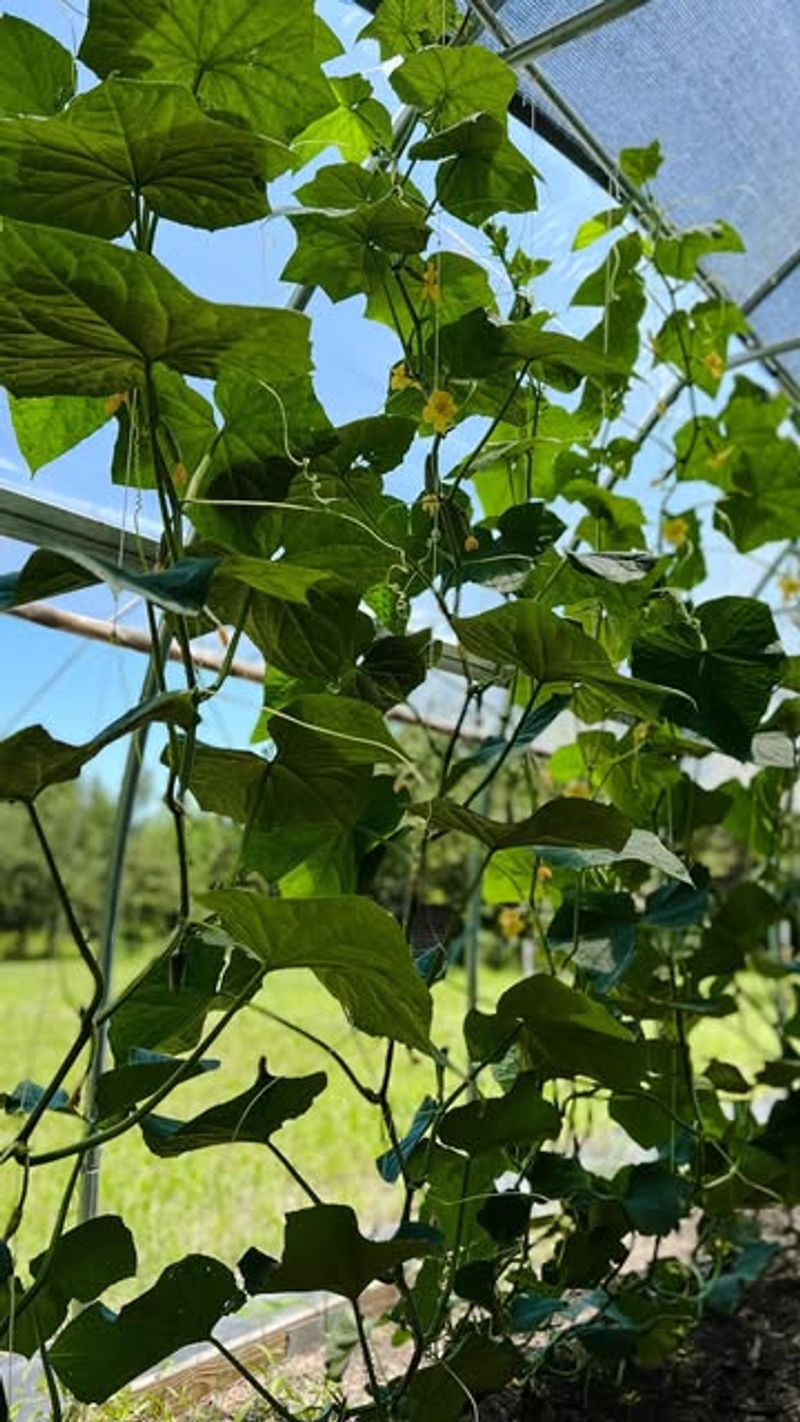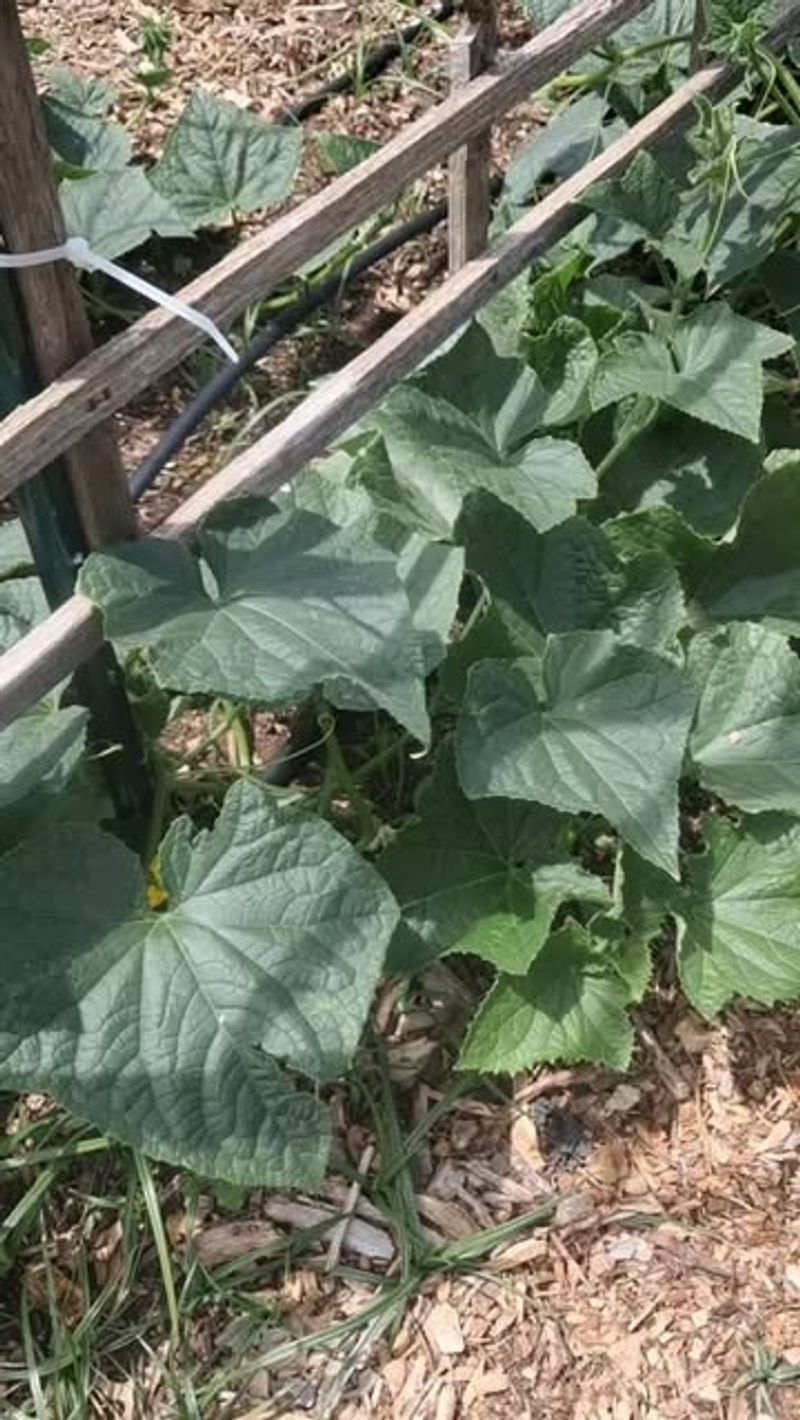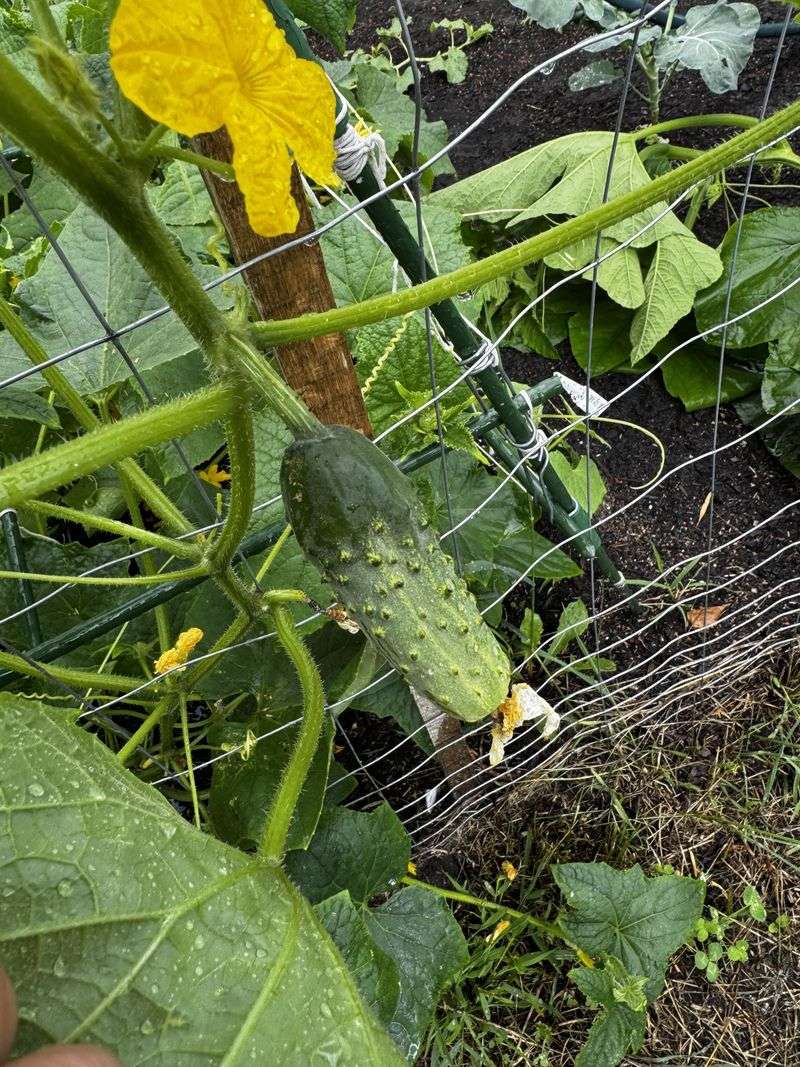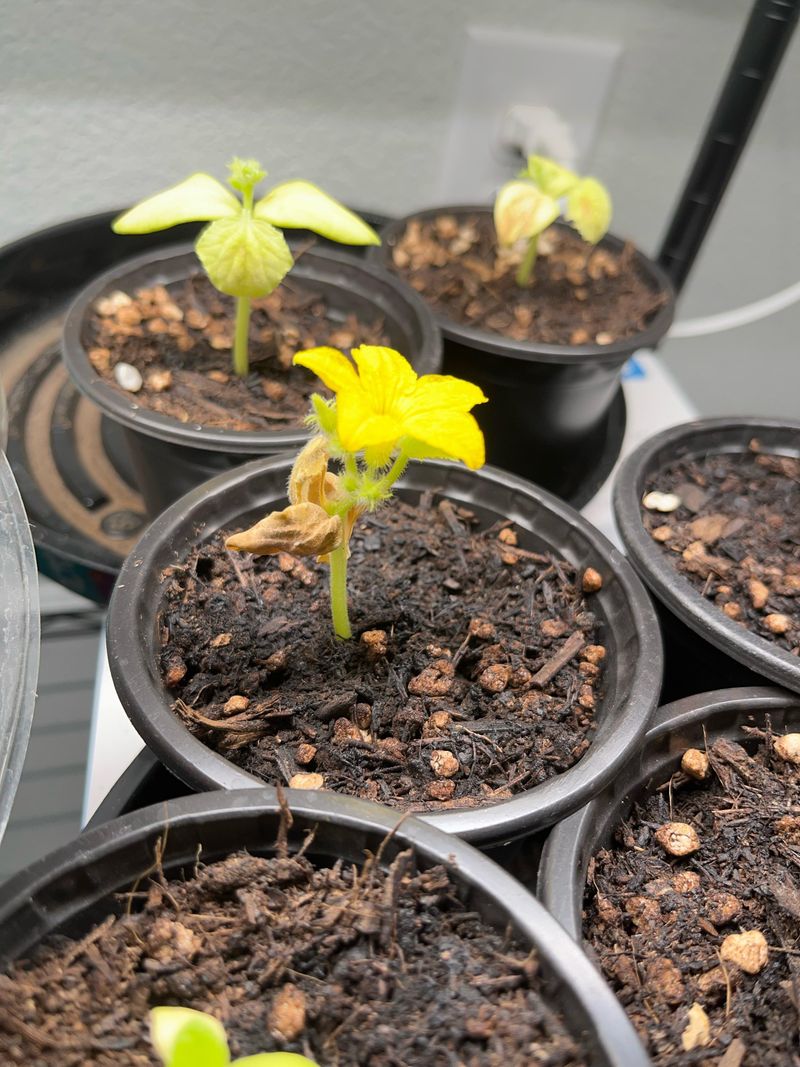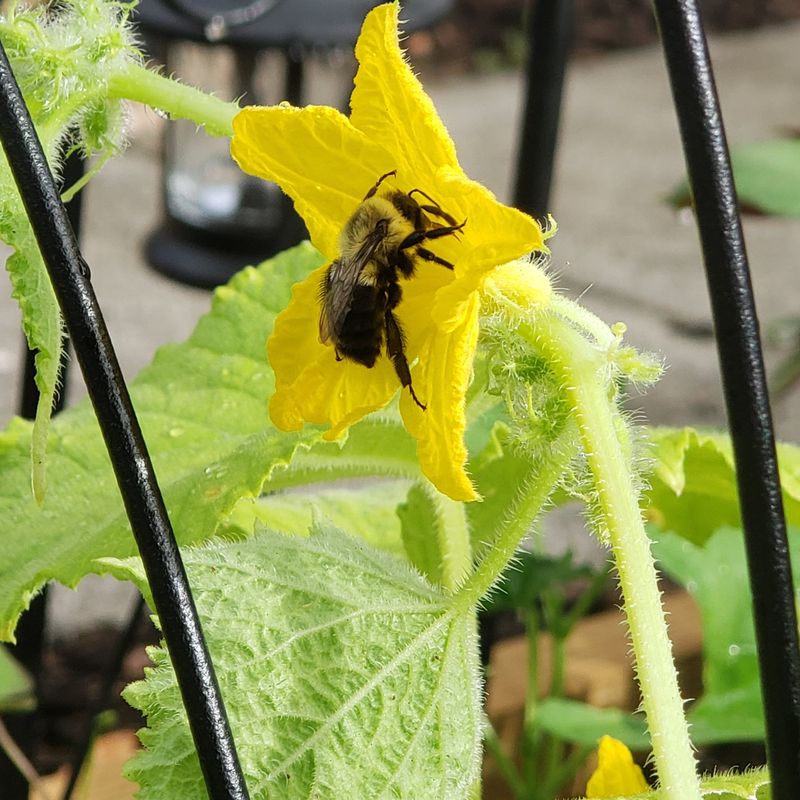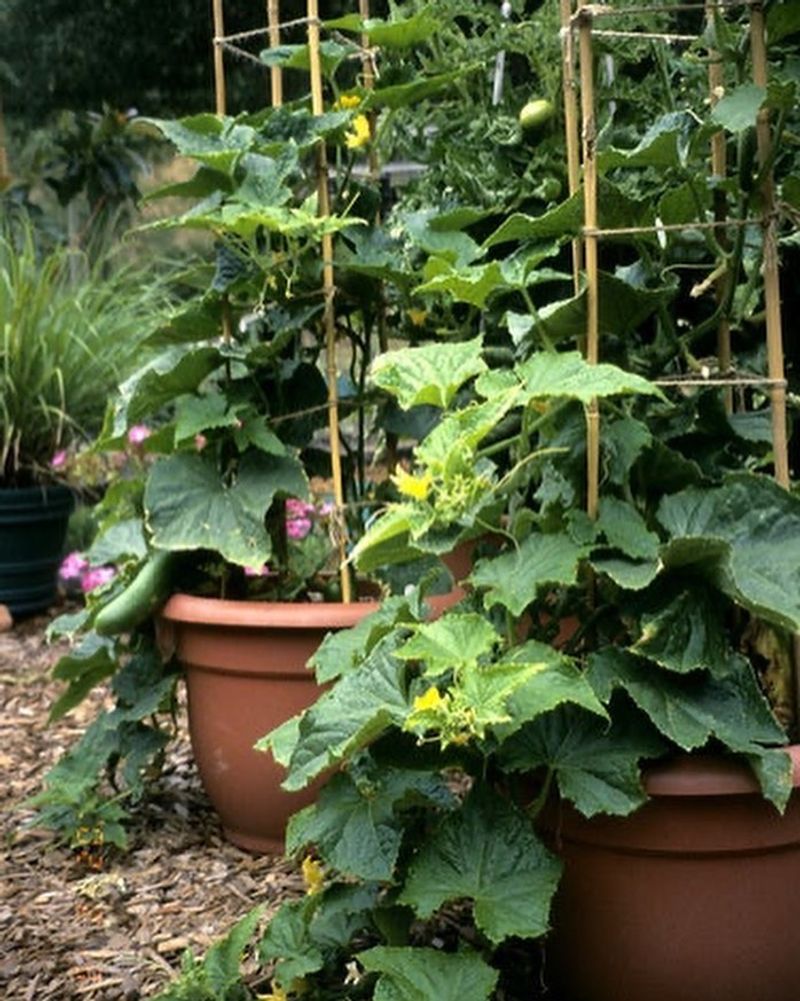You’ve planted your cucumbers, they’re growing like crazy—and now you’re wondering if it’s time to grab the shears. Some gardeners swear by pruning, others say let them sprawl. So what’s the real deal?
This guide gives you 15 practical, no-fluff tips to help you prune with confidence and get a healthier, more productive harvest.
1. Yes, Pruning Is Beneficial
Pruning cucumber plants isn’t just optional—it’s a game-changer for serious gardeners. Regular trimming helps air circulate through the foliage, reducing fungal disease risks that commonly plague cucumber vines.
Plants with proper airflow dry faster after rain or morning dew. The practice also directs the plant’s energy toward fruit production rather than excessive leaf growth, resulting in more cucumbers per plant.
Many gardeners report harvesting up to 30% more cucumbers from well-pruned plants compared to those left to grow naturally.
2. Wait Until The Right Growth Stage
Patience pays off when pruning cucumber plants. Hold off until your plants develop at least 5-7 true leaves before making any cuts. Premature pruning can stunt growth and reduce your overall harvest.
Young seedlings need all their leaves to establish a strong root system and gather enough energy for future fruit production. Watch for the vine to reach about 1-2 feet in length, which typically happens 3-4 weeks after transplanting.
This timing ensures the plant has enough strength to recover quickly from pruning stress.
3. Remove Damaged Leaves First
Yellowing, spotted, or insect-damaged leaves should be the first to go. These compromised leaves drain energy without contributing much to the plant’s growth. Grab your clean pruning shears and make cuts close to the main stem without leaving stubs.
Damaged leaves often harbor pests and diseases that can spread to healthy parts of the plant. Morning pruning allows cut areas to dry before evening, reducing infection chances.
Remember to sanitize your tools between cuts with rubbing alcohol to prevent spreading any potential pathogens.
4. Prune Lower Leaves To Prevent Disease
Lower leaves touching the soil become disease highways. These ground-hugging leaves easily pick up soil-borne pathogens like powdery mildew and bacterial wilt, which can devastate your entire crop. Remove all leaves within 8-10 inches of the soil surface.
This creates a protective zone that bacteria and fungi struggle to cross. The improved air circulation around the plant base helps dry moisture quickly after watering or rain.
Many cucumber diseases start at the bottom and work their way up, so this simple pruning technique can save your harvest.
5. Tame Side Shoots For Vertical Growth
Cucumber vines produce numerous side shoots that can create a tangled mess. For trellised cucumbers, identify the main vine and limit side shoots to 2-3 per plant. Pinch or cut excess shoots just above the second leaf node.
This vertical training method makes harvesting easier and maximizes garden space. Plants growing vertically receive more sunlight on all sides, leading to more even ripening and fewer misshapen fruits.
The cucumbers hanging from a trellis also grow straighter and cleaner than those resting on the ground.
6. Use The Two-Main-Vine Method
Professional growers often employ the two-main-vine technique for maximum yields. Allow your cucumber plant to develop two strong main stems instead of just one. When the seedling reaches about 6 inches tall, pinch the top growth tip to encourage branching.
Select the two strongest resulting shoots and remove any others. These two vines will produce more fruit than a single stem while remaining manageable.
Train both vines up your trellis, spacing them evenly to prevent overcrowding and ensure good light penetration throughout the plant.
7. Limit Fruit Load For Bigger Cucumbers
Quality over quantity makes a big difference in cucumber growing. When plants produce too many fruits simultaneously, they often develop smaller, less flavorful cucumbers. Identify and keep only 4-6 developing fruits per vine at any time.
Remove excess small cucumbers, especially any that appear misshapen or damaged. The plant will direct more nutrients to the remaining fruits, resulting in larger, tastier cucumbers.
This technique is particularly important during hot weather when plants are already stressed and struggling to provide adequate moisture to all fruits.
8. Maintain A Pruning Schedule
Consistency transforms good gardens into great ones. Establish a weekly pruning routine rather than one massive cutting session. Every 7-10 days, spend just 5-10 minutes per plant removing yellowing leaves, controlling side shoots, and harvesting mature cucumbers.
Regular light pruning causes less stress to plants than infrequent heavy pruning. This approach maintains continuous airflow and sunlight penetration throughout the growing season.
Mark your calendar or set phone reminders—the most common pruning mistake is simply forgetting to do it until problems appear.
9. Prune In The Morning For Plant Health
Timing your pruning sessions makes a significant difference. Early morning pruning, between 7-9 AM, allows cut surfaces to dry completely before evening moisture arrives. Wounds that remain damp overnight become perfect entry points for bacteria and fungi.
Morning-pruned plants also recover faster because they have the entire day of photosynthesis ahead to heal. The cooler temperatures reduce stress on both the plant and gardener.
Avoid pruning during midday heat, which can shock plants and cause unnecessary wilting even in healthy remaining leaves.
10. Use Clean, Sharp Tools
Dull or dirty pruning tools cause unnecessary damage to cucumber plants. Sharp, clean shears make precise cuts that heal quickly, while jagged cuts from dull blades create larger wounds that invite disease.
Before each pruning session, wipe your tools with rubbing alcohol or a 10% bleach solution. This simple step prevents transferring diseases between plants. For small pruning jobs, your fingers work well for pinching off shoots.
Invest in quality bypass pruners rather than anvil-style cutters, as they create cleaner cuts without crushing stems.
11. Make Proper Cuts At Nodes
Location matters tremendously when pruning cucumbers. Always make cuts just above a leaf node—the point where leaves attach to the stem. This technique stimulates new growth from the node below your cut.
Avoid leaving long stem stubs, which can die back and potentially introduce disease. Clean cuts angled away from the node prevent water from collecting on the cut surface.
For removing entire side shoots, cut at a slight angle where the shoot meets the main stem, being careful not to damage the main vine in the process.
12. Different Pruning For Bush Vs. Vining Types
Bush cucumbers require a gentler approach than their vining cousins. These compact varieties typically need minimal pruning—focus mainly on removing yellowed leaves and thinning overcrowded areas for better airflow.
Vining types benefit from more aggressive pruning to control their sprawling nature. Train vining cucumbers to a trellis and limit side shoots to prevent them from becoming a tangled mess.
Always check seed packets or plant tags to identify which type you’re growing before developing your pruning strategy.
13. Remove Flowers In Early Growth
Young cucumber plants often produce flowers before they’re ready to support fruit development. Removing early flowers might seem counterintuitive, but it allows plants to establish stronger roots and foliage first.
For the first 2-3 weeks after transplanting, pinch off any flowers that appear. This temporary sacrifice leads to stronger plants that produce more cucumbers over the entire season.
Once plants reach about 1-2 feet tall with several true leaves, you can allow flowers to develop into fruits.
14. Avoid Pruning During Pollination
Timing pruning around pollination activities protects your future harvest. Female cucumber flowers (the ones with tiny cucumbers behind them) need pollination from male flowers to develop properly. Heavy pruning during peak flowering can remove too many male flowers.
Morning hours between 6-10 AM see the most bee activity in gardens. Schedule pruning for late morning after pollination has occurred for the day.
If you notice a shortage of male flowers, temporarily reduce pruning to maintain enough pollen sources for developing fruits.
15. Prune More Aggressively In Humid Climates
Gardeners in humid regions face greater disease pressure with cucumbers. In these conditions, more aggressive pruning becomes necessary to combat fungal and bacterial issues. Maintain greater spacing between plants and remove up to 30% more foliage than in drier climates.
Focus on creating air tunnels through the plant by selectively removing interior leaves. This increased airflow helps foliage dry quickly after rain or morning dew.
Consider growing cucumbers on tall trellises in humid areas to maximize air movement around all parts of the plant.

